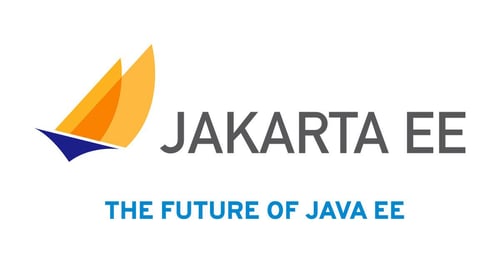Posts tagged REST
Nugget Friday - Mastering Jakarta REST Filter Chains
Published on 07 Feb 2025
by Luqman Saeed
Topics:
REST,
Jakarta EE
|
0 Comments
In today's Nugget Friday, we're tackling a powerful but often misunderstood feature of Jakarta REST (formerly JAX-RS): filters and filter chains. Whether you're handling security, logging, compression or other cross-cutting concerns, understanding filters is important for building reliable Jakarta REST applications on the Jakarta EE (formerly Java EE) platform. So grab your favorite beverage, and let's dig in!
Nugget Friday - Getting Started with MicroProfile OpenAPI Documentation
Published on 17 Jan 2025
by Luqman Saeed
Topics:
REST,
MicroProfile,
OpenAPI
|
0 Comments
Clear and accurate API documentation is essential. It bridges the gap between your REST APIs and the developers who rely on them, ensuring smooth integration and usage. However, creating and maintaining up-to-date documentation often feels like a daunting task, requiring either tedious manual effort or complex tooling.
In this Nugget Friday, we’ll discuss how you can streamline API documentation to deliver outstanding API experiences with minimal overhead.
A Preview of Jakarta REST (JAX-RS) 4.0 in Jakarta EE 11
Published on 13 Nov 2024
by Luqman Saeed
Topics:
REST,
Jakarta EE 11
|
0 Comments
The latest version of Jakarta REST (formerly Java API for RESTful Web Services, aka JAX-RS), Jakarta REST 4.0, will bring some notable improvements and changes as part of Jakarta EE 11. This release focuses on modernizing the specification by removing legacy dependencies, enhancing developer convenience, and improving test coverage. Before exploring the key changes, let's first take 37K feet intro to JAX-RS for the new comers to the platform.
Master Your HATEOAS as a Jakarta EE Developer
Published on 23 Oct 2024
by Chiara Civardi
Topics:
REST,
Jakarta EE,
HATEOAS
|
0 Comments
Creating scalable and flexible APIs is essential for today's web applications. When it comes to RESTful APIs in enterprise Java/Jakarta EE software development, one concept that plays a crucial role in driving adaptability, discoverability and evolvability is Hypermedia as the Engine of Application State (HATEOAS). In effect, the HATEOAS principle can help developers to significantly enhance their API designs, making them more powerful and futureproof.
Our latest guide on HATEOAS is specifically designed for developers familiar with RESTful API development using Jakarta REST (formerly known as JAX-RS). In this blog post, we’ll explore the key takeaways from the guide and show you how mastering HATEOAS can transform the way you build and evolve your APIs.
Improving Responsiveness in Jakarta REST (JAX-RS) Services through Asynchronous Processing
Published on 19 Sep 2024
by Luqman Saeed
Topics:
REST,
Java,
Jakarta EE
|
0 Comments
Speed and responsiveness are very important in the development and use of modern RESTful APIs in Java applications, as they help ensure efficiency and scalability, especially as businesses move towards cloud-native applications. The primary means of achieving high speed, responsiveness, efficiency and scalability is through asynchronous processing. It allows applications to handle requests efficiently and perform tasks without getting stuck, making things run smoother and faster for the user while supporting scalability.
In this post, we'll look at how asynchronous processing works in Jakarta RESTful Web Services (JAX-RS or Jakarta REST) and how to implement async patterns in JAX-RS to enhance your Java web services, so you can build powerful and scalable RESTful APIs in Java.
Nugget Friday - Exploring Jakarta RESTful (JAX-RS) Web Services Validation
Published on 13 Sep 2024
by Luqman Saeed
Topics:
REST,
Jakarta EE
|
2 Comments
Welcome to this week’s Friday Nugget and congratulations, you've made it through the week! What better way to kick off the weekend than by talking about simplifying something that is essential to ensure that data flows smoothly between clients and servers, meeting all necessary formats, types and rules. Correct, we are talking about validation.
Caching REST Resources In Jakarta REST (formerly JAX-RS)
Published on 07 May 2024
by Luqman Saeed
Topics:
REST,
Jakarta EE
|
0 Comments
REST, or Representational State Transfer, is the web standard for building APIs and applications. It offers a lightweight architecture for exchanging data between applications over the web. Jakarta REST (formerly JAX-RS) is the standard API for building RESTful web services on the Jakarta EE Platform.
This blog post looks at caching within Jakarta REST. We'll explore how to use the built-in features and functionalities to enhance the performance and user experience of your RESTful APIs through resource caching. By using these techniques, you can significantly reduce server load, improve responsiveness, and enhance the overall efficiency of your web resources.
Expressive REST Resources with Java Records and Jakarta REST
Published on 09 Apr 2024
by Luqman Saeed
Topics:
REST,
Java,
Jakarta EE
|
1 Comment
Modern web applications often adopt a layered architecture to separate concerns and improve maintainability. In this paradigm, your REST API acts as a communication layer, exposing resources to clients while interacting with the deeper layers of your application. Leveraging Java Records as Data Transfer Objects (DTOs) in this context helps to simplify the design of your REST resources, making them more expressive and easier to work with.
How To Get Resource Method Information With ResourceInfo In Jakarta REST
Published on 03 May 2023
by Luqman Saeed
Topics:
REST,
JakartaEE,
Jakarta EE
|
2 Comments
Oftentimes in a Jakarta REST application, you may need to access some metadata about a given resource method matched by the Jakarta REST runtime, outside of a resource class. This could be so as to dynamically alter the client's request based on some custom business requirement, or for informative purposes. For example, in a Jakarta REST component like an exception mapper, you might want to get the currently matched resource method and get its HTTP method.
Intercepting REST Requests With Jakarta REST Request Filters
Published on 14 Mar 2023
by Luqman Saeed
Topics:
Java EE,
REST,
JakartaEE,
Jakarta EE
|
0 Comments
Oftentimes in web applications, there is the need to intercept a request from the client to resource methods. Sometimes this interception must take place even before the request is matched to a resource method. For such needs, Jakarta REST provides the jakarta.ws.rs.container.ContainerRequestFilter interface. This interface is a Jakarta REST extension that can be used to intercept requests to resource methods.
An implementation of this interface can decide if requests should be intercepted before they’re matched to resource methods through the @PreMatching annotation. A pre-matched request filter will be invoked by the container before the request is matched to its intended resource method.
For this blog post, let us look at two use cases for request filters. One is a situation where for security reasons, certain HTTP methods are not allowed. For example an organisation can have a security rule in its firewall that disallows HTTP PUT methods. In this case, either all methods have to be POST or request filters can be used to workaround the restriction.
The second situation is for the custom implementation of authentication. Of course you absolutely should NOT hand-roll your own security setup unless you know in detail exactly what you are doing. You are better off using tried and tested security frameworks and services out there. But for this blog post, assuming we need to implement custom security, we can use a pre matching request filter. The following code snippet below shows a ContainerRequestFilter implementation that implements the two scenarios above.


%204.0%20in%20Jakarta%20EE%2011%20Blog.png?width=500&name=A%20Preview%20of%20Jakarta%20REST%20(JAX-RS)%204.0%20in%20Jakarta%20EE%2011%20Blog.png)

%20Services%20through%20Asynchronous%20Processing%20Blog.png?width=500&name=Improving%20Responsiveness%20in%20Jakarta%20REST%20(JAX-RS)%20Services%20through%20Asynchronous%20Processing%20Blog.png)
%20Web%20Services%20Validation.png?width=500&name=Exploring%20Jakarta%20RESTful%20(JAX-RS)%20Web%20Services%20Validation.png)


